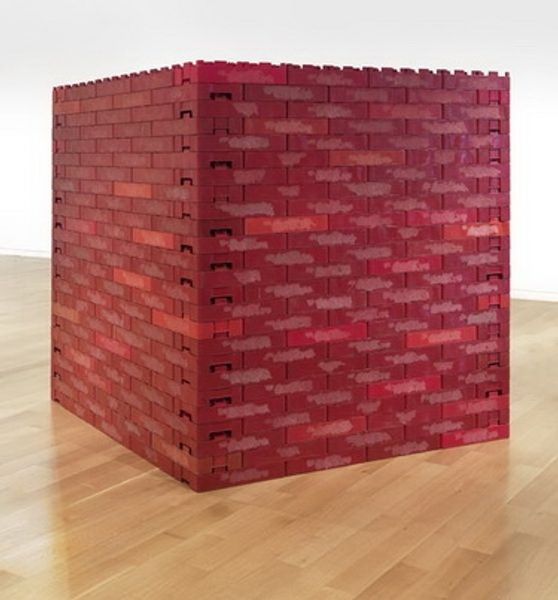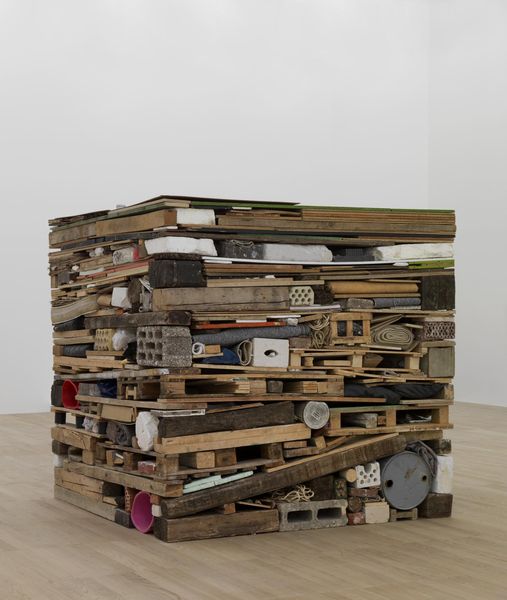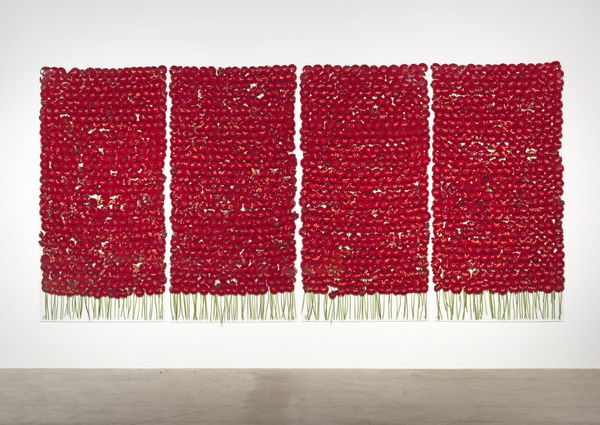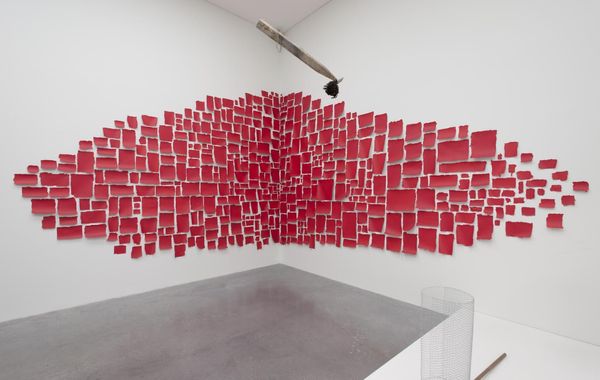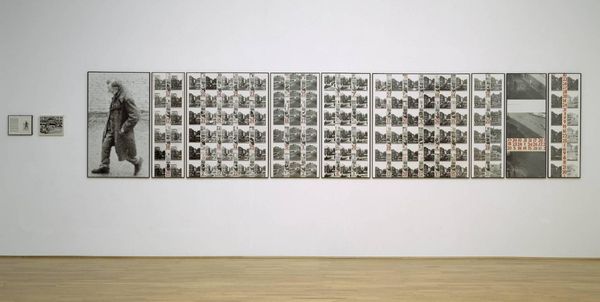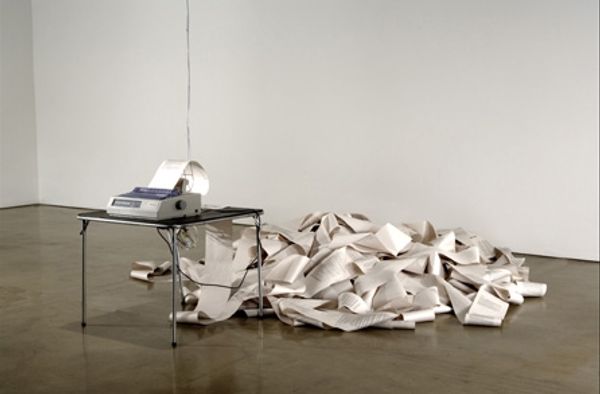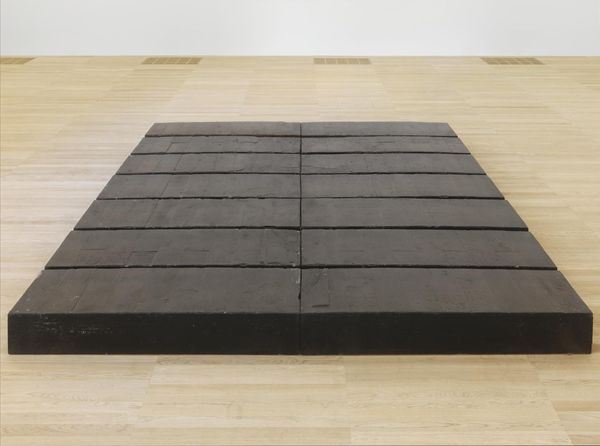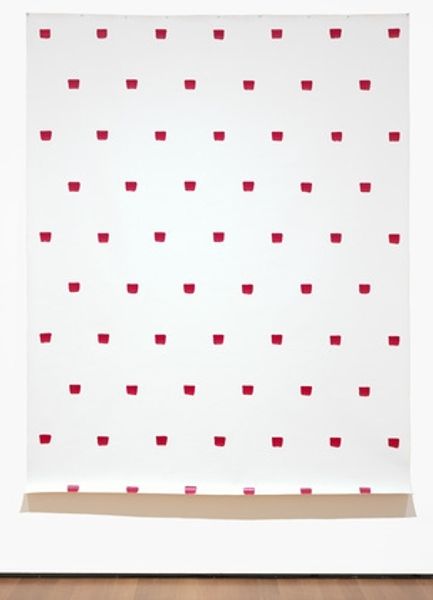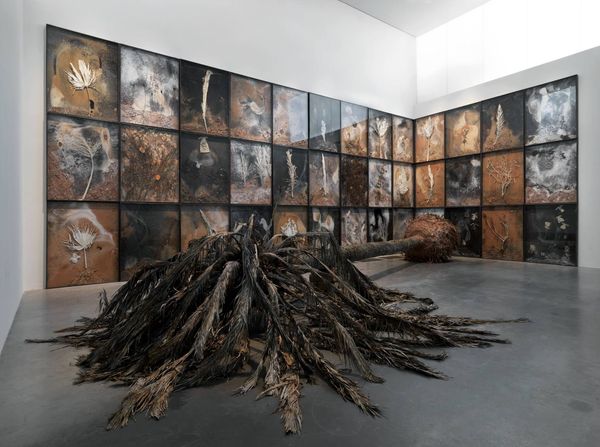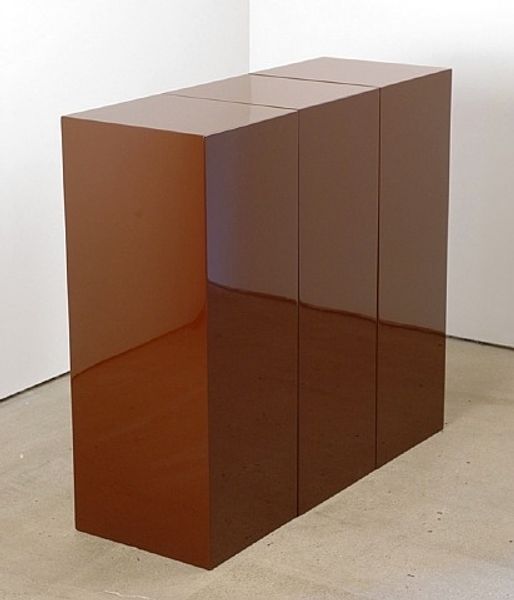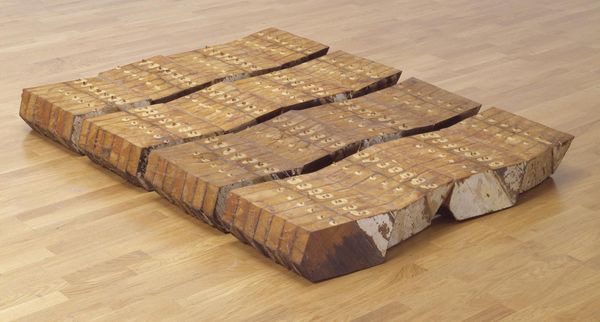
Dimensions: object: 2032 x 3226 x 200 mm
Copyright: © Luis Camnitzer | CC-BY-NC-ND 4.0 DEED, Photo: Tate
Editor: This is "Leftovers" by Luis Camnitzer, a large installation of wooden boxes stained with what looks like blood. Each box is stamped with the word "Leftover." It’s very unsettling. What's your take on this work? Curator: Considering Camnitzer's background, it's crucial to view this work within the historical context of political violence in Latin America. The repetition of "Leftover," coupled with the blood-like stains, points towards the dehumanizing language often used to describe victims of state-sponsored violence. Editor: So, you're saying it's less about the aesthetic of the boxes and more about what they represent in a larger sociopolitical narrative? Curator: Precisely. The visual impact is undeniably powerful, but the artwork's true force lies in its commentary on the public role of art in confronting uncomfortable truths and challenging power structures. Editor: That adds a layer of meaning I hadn’t considered. Thanks for shedding light on the socio-political context. Curator: My pleasure. Considering the politics of imagery helps us unpack the nuances embedded in works like this.
Comments
Join the conversation
Join millions of artists and users on Artera today and experience the ultimate creative platform.
tate 3 months ago
⋮
Camnitzer’s Leftovers reflects a period of political turmoil and violent repression in Latin America. The installation is made up of individually bandaged boxes, stained with red paint and with the word ‘Leftovers’ stencilled on them. The implication is that they contain human remains. Uruguay, the country in which Camnitzer spent his formative years, descended into chaos during the late 1960s. A wave of labour disputes prompted the President Jorge Pacheco to declare a state of emergency and impose martial law. Demonstrations were brutally suppressed, and political dissidents were arrested and often tortured. Gallery label, February 2016
